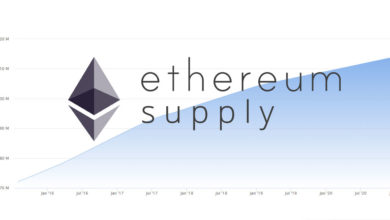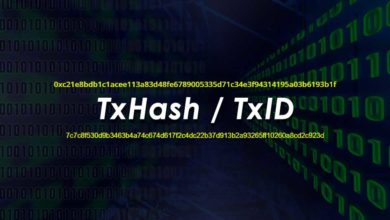What is Block Explorer and how to use it? Blockchain Explorer explained
If you are new to Bitcoin and Cryptocurrencies then by now you might have heard the term “Block Explorer”. Blockchain Explorers and its data might seem confusing at the beginning but once you master this tool you’ll know how effective it is in the cryptocurrency ecosystem. This article will help you understand what is Blockchain Explorer aka Block Explorer, how it works and how to use Block Explorers.
Before we get to know about Blockchain Explorer here are few things to know about cryptocurrencies and Blockchain in general. Nearly all Cryptocurrencies such as Bitcoin, Ethereum, Litecoin, Monero and many other altcoins out there relies on blockchain to conduct transactions.
Blockchain is a encryption technology and is an ever growing set of blocks that have a record of transaction data. Blockchains are immutable, distributed, decentralized and a secure digital ledger. As this digital information is accessible to anyone on the internet it becomes transparent and incorruptible. Anybody can check the balance of any public address and anyone can view any transaction details on the blockchain. How? By using block explorers.

What is Block Explorer?
Block explorer is a website or a tool that allows one to browse through blocks, view wallet addresses, network hashrate, transaction data and other key information on the blockchain. Block Explorer is simply a search tool. Just like how you use web browsers to browse through the Internet; block explorers allows one to browse the blockchain. They are search engines made specifically to search the blocks of a blockchain. Each and every cryptocurrency that relies on its own blockchain will also have its own block explorer. So you must use block explorers specific to that cryptocurrency. For example using Bitcoin block explorer, you’ll not be able explore the chain of Ethereum or Litecoin. For Ethereum you’ll need to use Ethereum block explorer and for Litecoin you have to use Litecoin explorer.
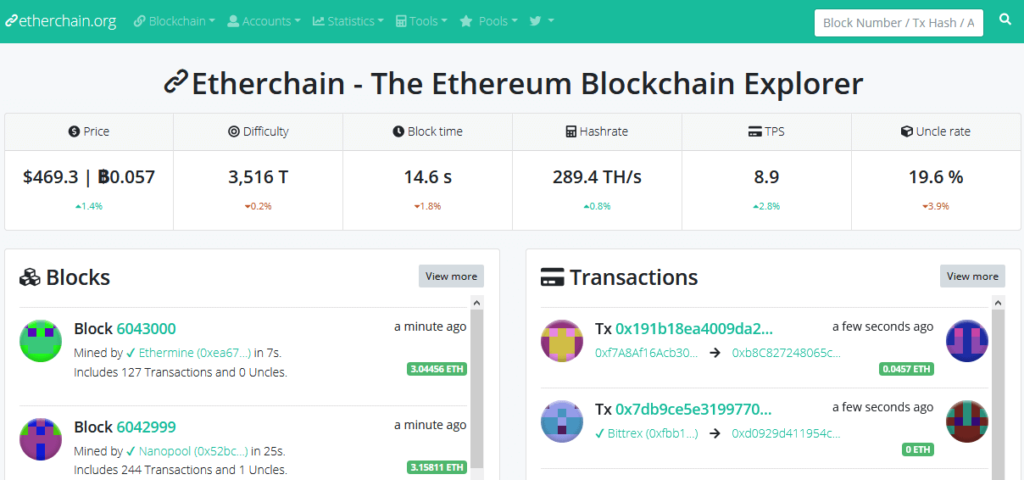
blockexplorer.com, blockcypher.com, btc.com and blockchain.com?
Just like how we have different web browsers and search engines to search the web; there are many blockchain explorers available for each coins. Either it could be official, community developed or maintained by any individual organizations. If you search “Block Explorer” in Google some of the sites that show up are blockexplorer.com, blockchain.com, blockcypher.com, mempool.space and btc.com.
These are some of the most popular Bitcoin blockchain explorers to find out information on the Bitcoin blockchain. They are most trusted and a well established tools to explore the real-time and historical information of the Bitcoin blockchain. Not just these but there are dozens of other block explorers out there for Bitcoin. In addition to exploring blocks some of these website offers useful tools such as wallet, stats, market data, widgets and API services. Here we’re not going to explain all of those additional features and we won’t go into the technical part on how these services fetches data from the blockchain. Instead we’ll explain the use of these services and we will show you some interesting things that you can do with block explorers.
How to use Block Explorer?
To explain things we’ll be using different services of Bitcoin block explorers. All explorers supply same information and once you understand these displayed data you’ll grasp block explorers of all other crypto currencies. Alright! Here are some of the common things that you can do with a block explorer.
Latest blocks and Latest transactions
Whichever service it is the first thing that you’ll notice on the homepage is a list of most recent blocks and transactions.
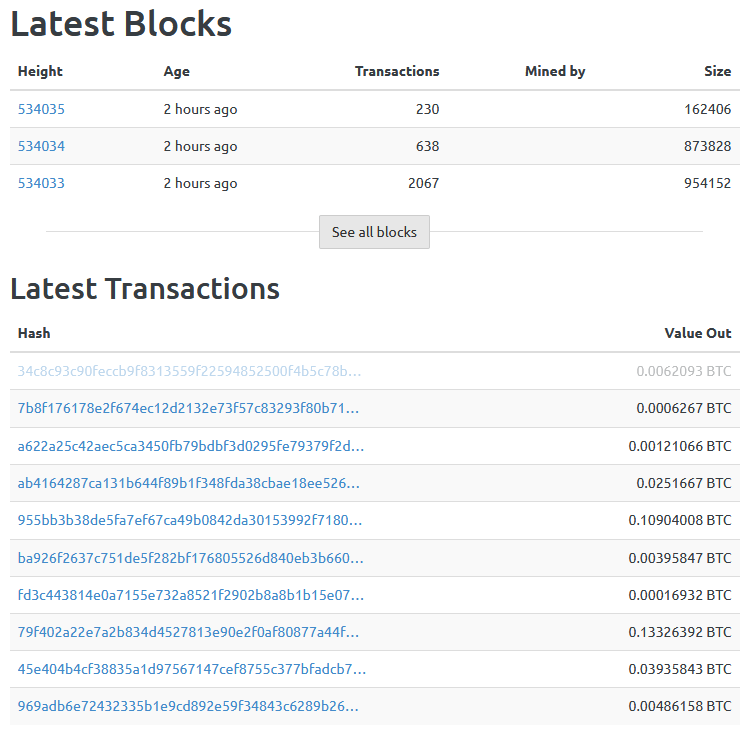
Once the miner solves a block it will get added to the blockchain and all these block explorers will update this information in real-time. Depending on the service this table displays the following information: block height, transaction hashes, age of the block, total number of transactions involved in a block, its size, block reward and relayed by / mined by.
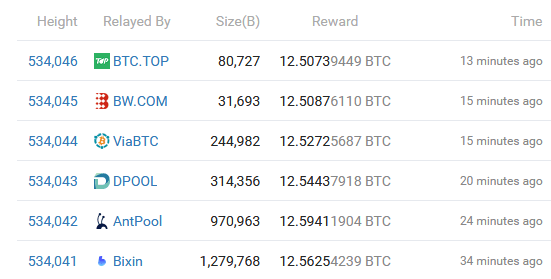
Finding blocks and viewing all of its transactions
The block feed and transaction feed displayed on the homepage will be same across all explorers. However depending on the service the information displayed there will be limited. If you’d like to know more in-depth information then you’ll need to explore a particular block. You can either click the block feed link or you can input the block height number directly in the search field of the block explorer.

Now this page displays valuable information about a block that you are looking at specifically. When you explore a particular block most explores displays summary of the block and its transactions. Summary displays the following information:
- Number of transactions on the block
- Estimated transaction volume
- Transaction fees
- Total coins that was transacted
- Block reward, weight, size, version
- Who mined the block
- When the block was mined
- Nonce, Merkle Root
- Hash of the current block
- Hash of previous block and hash of next block
Followed by summary you’ll find information about each individual transactions that occurred in that particular block. This section displays Bitcoin addresses and the transaction ID of each single transactions. By looking at this you can easily understand how much Bitcoin was transacted, which address received it and from where it was sent from.
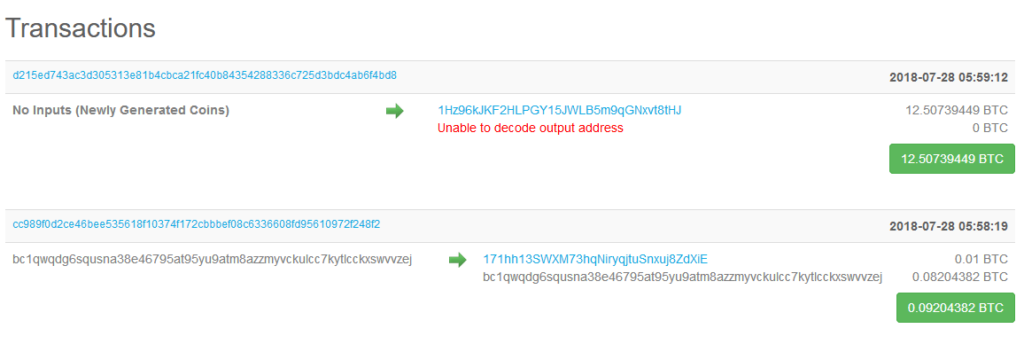
Exploring further
The data displayed in block explorers are interlinked and well connected to one another. For example from this transaction lists you can click on transaction id and view more details about that particular ID. It will display the block height in which the transaction took place, total number of confirmations and few other additional data. From there you can click on wallet address, navigate further and audit its transaction history and balance.
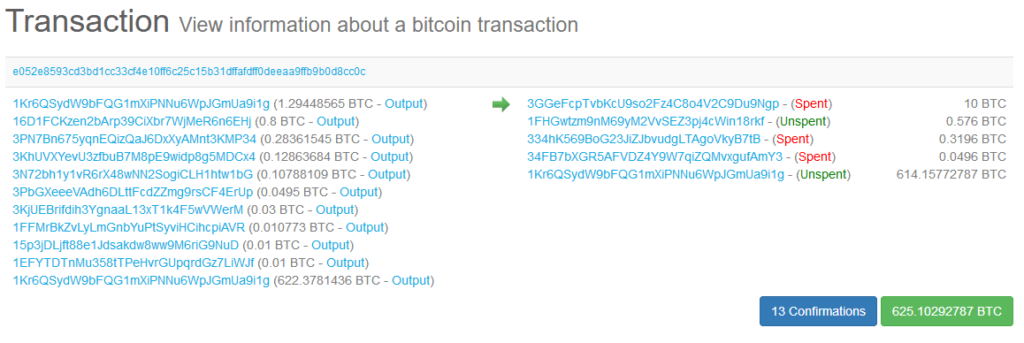
Network Status: Finding Hashrate, difficulty, fees and earnings
If you are Bitcoin miner then these are some information which you’ll find useful and start using it in your day to day mining routine. Not all explorers display this but some explorer like mempool.space and btc.com puts up more in-depth information about the current network.

This section displays network hashrate, difficulty, next estimated difficulty and few other network specific information. For example the current hashrate is 42.91 EH/s which is equal to 42,910,000 TeraHash. These network data will help you to estimate your mining income and Bitcoin fees needed for a successful transaction.
Exploring Genesis block and viewing Rich list
Block explorer allows you to search any information about any block that you wish. You can even navigate to the first block that was mined in 2009. You can check the genesis block difficulty, wallet address that mined it and the reward. To find the genesis block just type 1 in search bar of block explorer and it will display the information of block height #1.
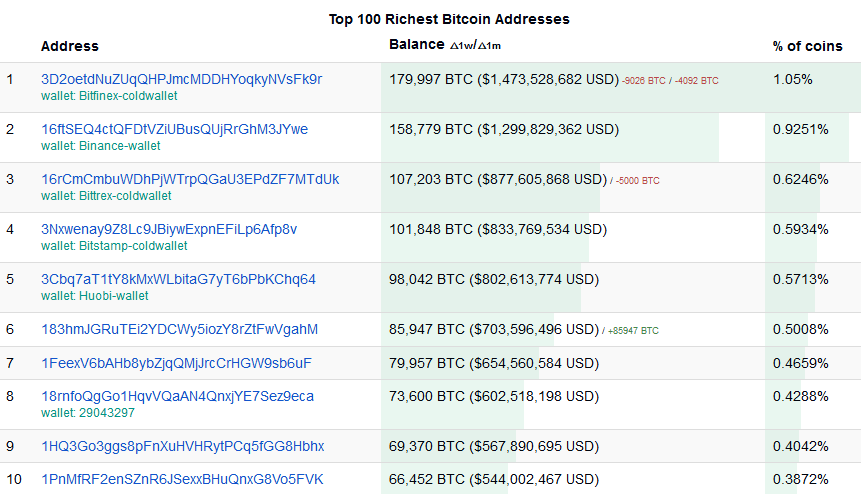
src: https://bitinfocharts.com/top-100-richest-bitcoin-addresses.html
Ever wondered which Bitcoin address holds the most number of Bitcoins. Using block explorer you can check the most popular address by the number of outputs and the top 100 richest Bitcoin addresses. But do note that not all explorers provides this option and feature like this won’t be available on privacy coins like Monero.
In addition to this; few other information that you can examine using blockchain explorer are as follows: Viewing largest transaction, Mempool status, double spend incidents, blockchain size, total transaction per day, orphaned blocks and market capitalizations.
If you found this article useful then do share it and if you like to learn more about Bitcoin, Blockchain and Cryptocurrencies then do subscribe and follow us on Twitter.

